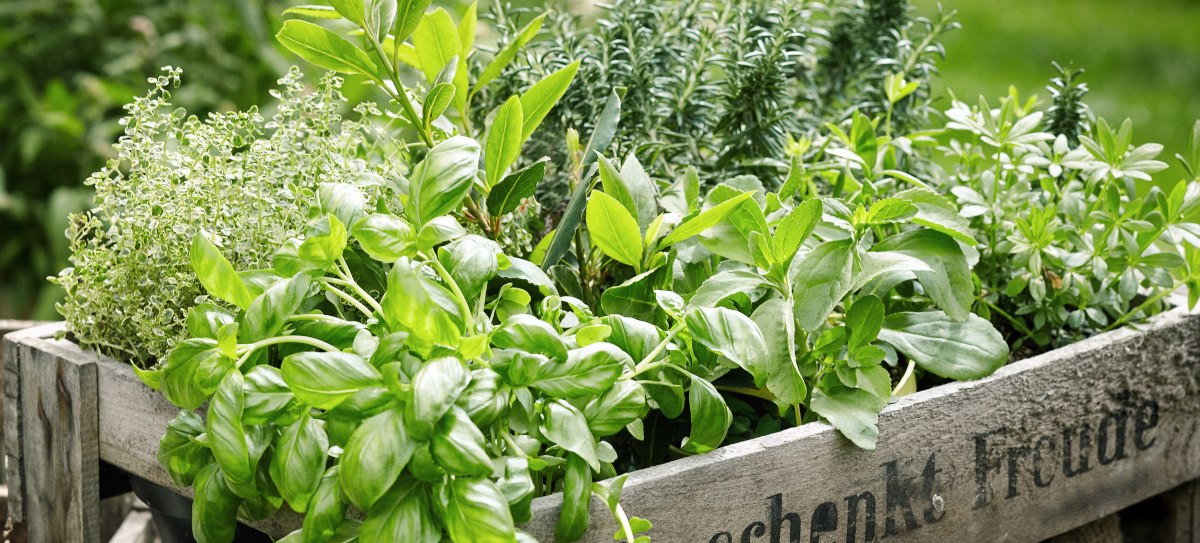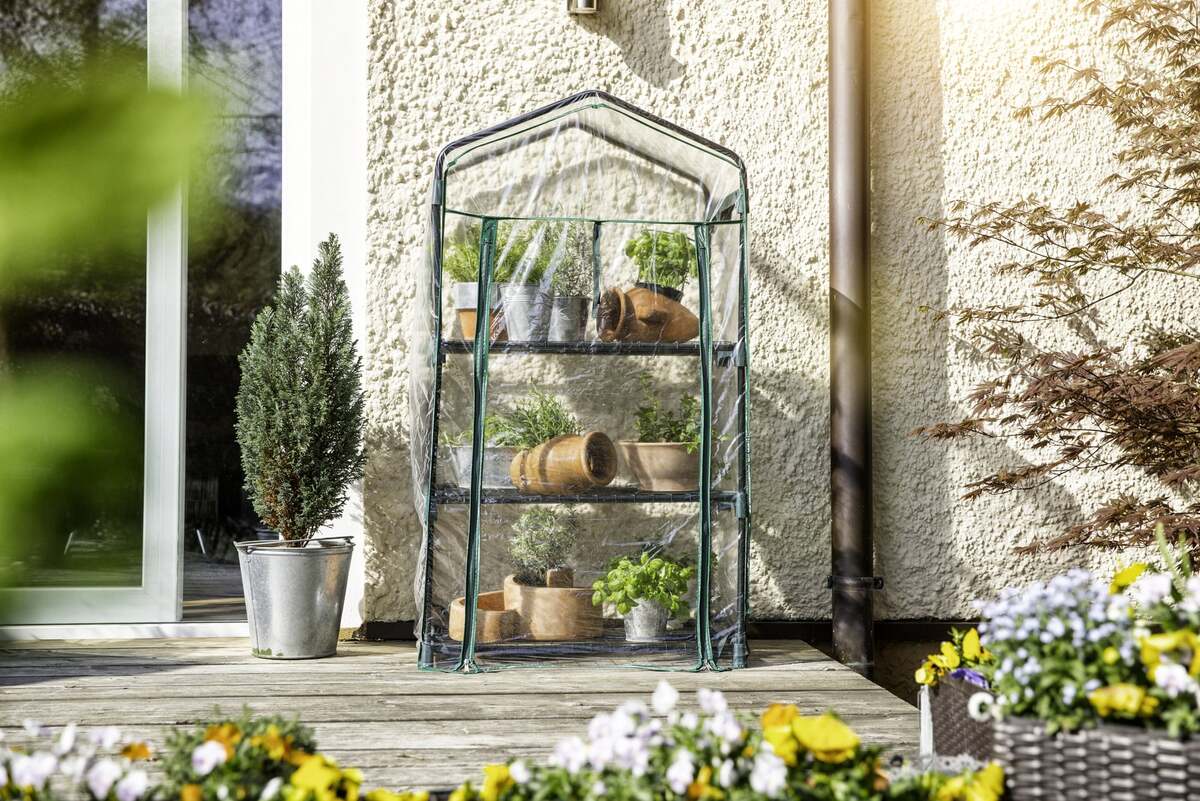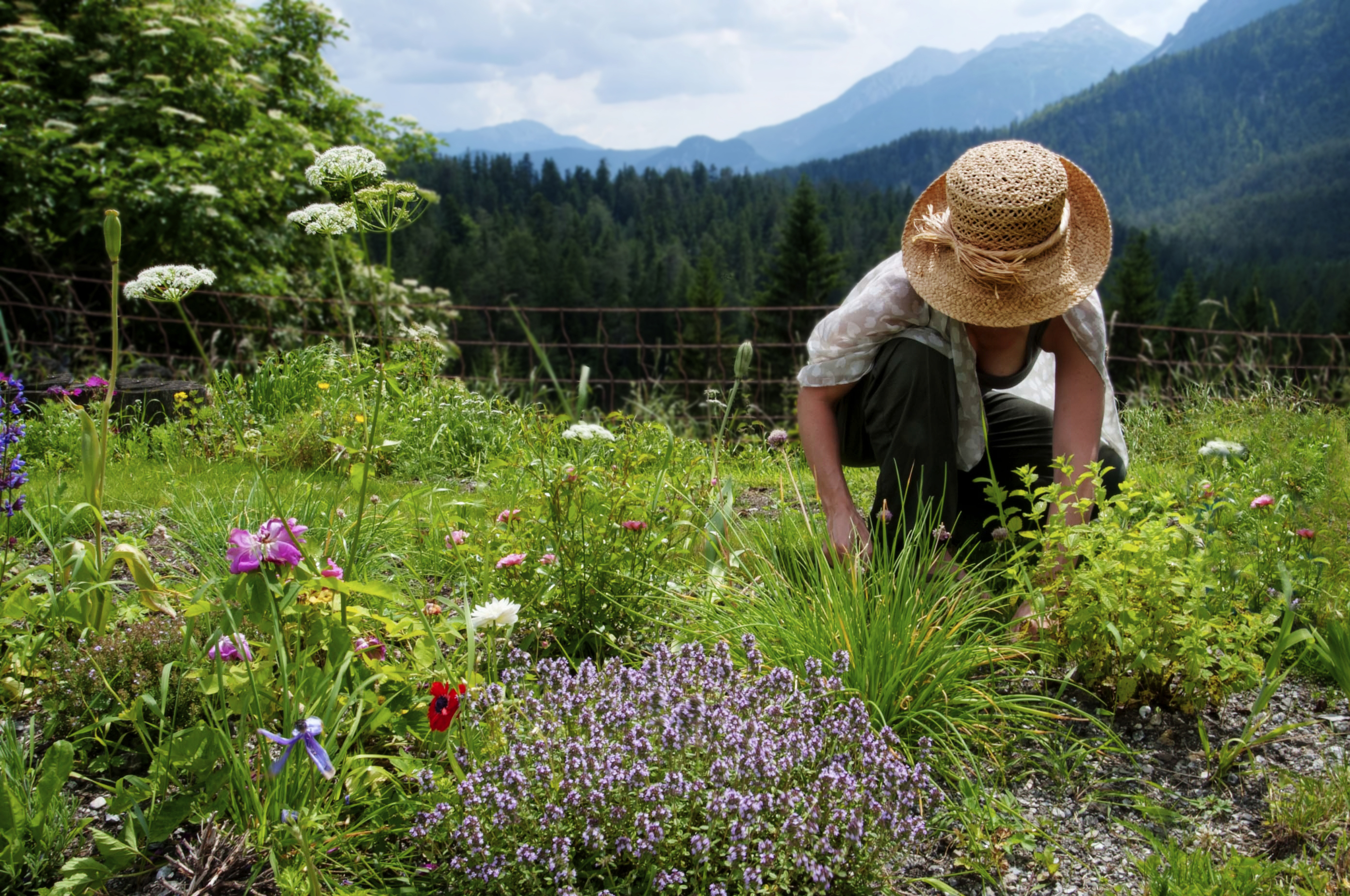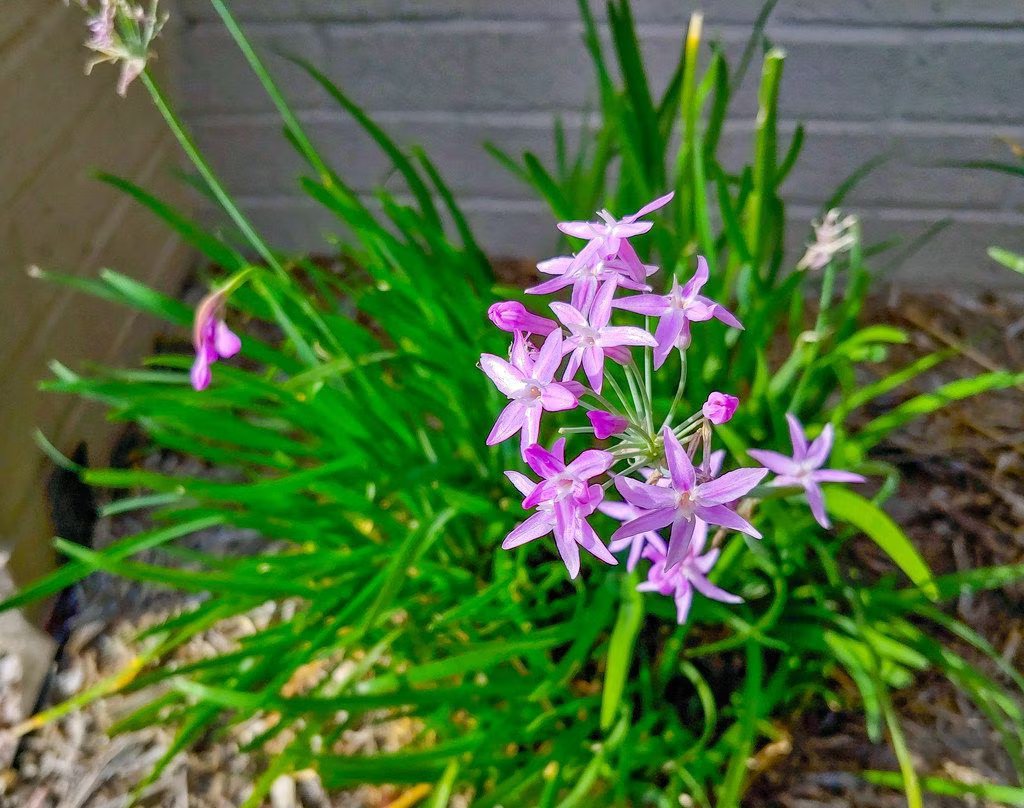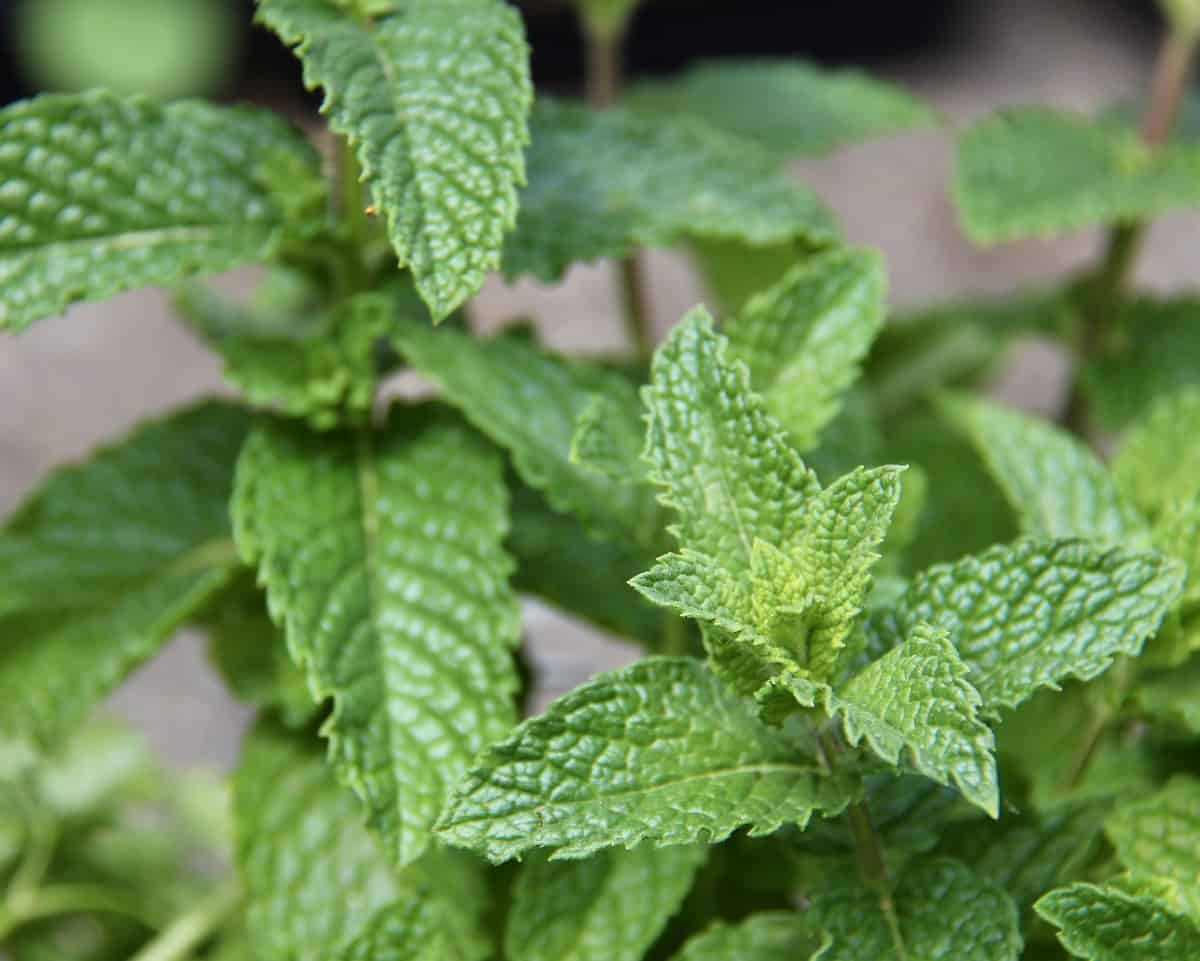Home>Types of Gardening>Edible Gardening>How To Grow Herbs On A Balcony
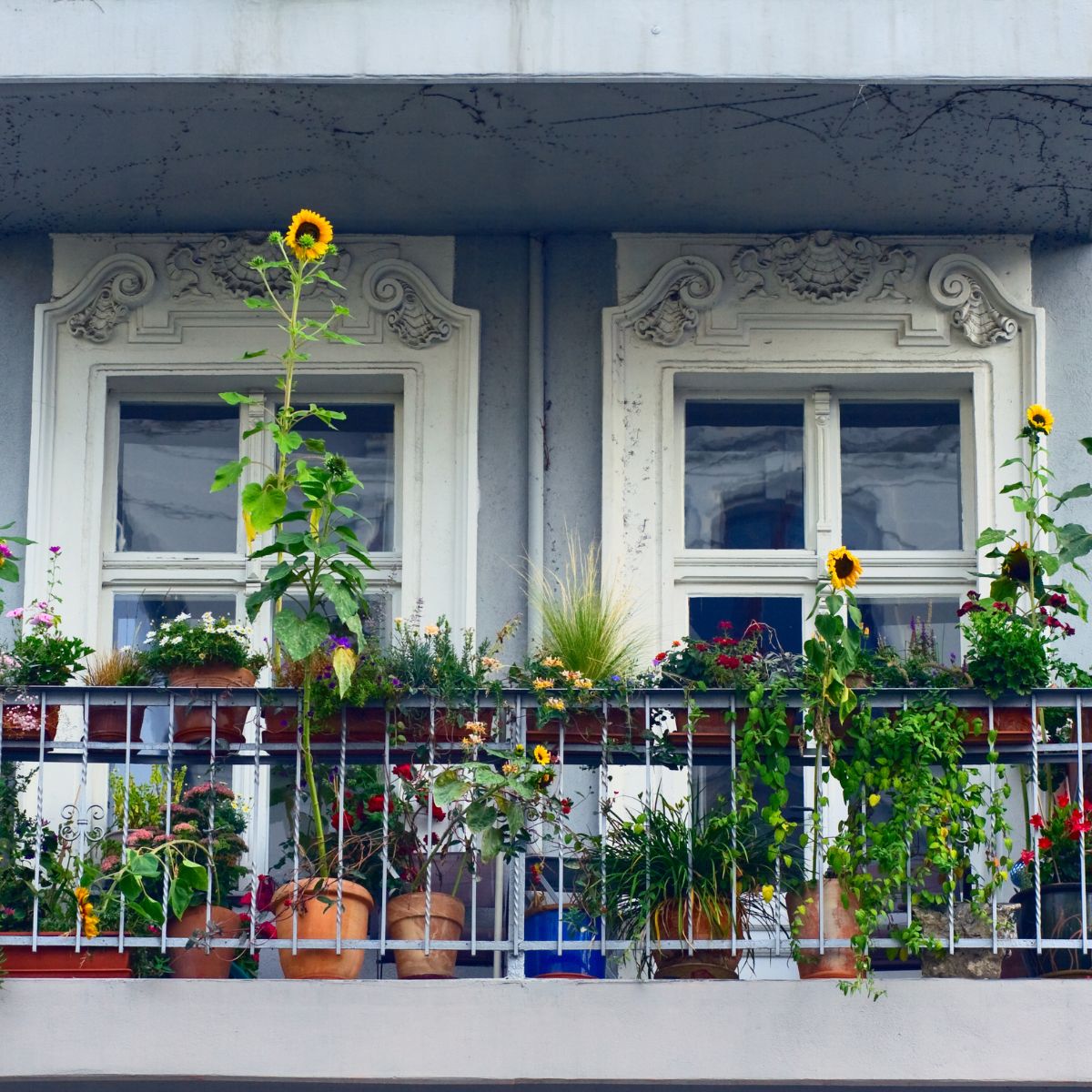

Edible Gardening
How To Grow Herbs On A Balcony
Modified: February 9, 2024
Learn how to grow your own herbs on a small balcony with our practical tips and advice. Discover the joys of edible gardening and add flavor to your meals.
(Many of the links in this article redirect to a specific reviewed product. Your purchase of these products through affiliate links helps to generate commission for Chicagolandgardening.com, at no extra cost. Learn more)
Table of Contents
- Introduction
- Benefits of Growing Herbs on a Balcony
- Choosing the Right Herbs for Balcony Gardening
- Selecting the Perfect Location for Your Herb Garden
- Containers and Soil for Balcony Herb Gardening
- Watering and Fertilizing Tips for Balcony Herb Gardens
- Sunlight and Shade Requirements for Herbs on a Balcony
- Common Pests and Diseases in Balcony Herb Gardens
- Harvesting and Using Fresh Herbs from Your Balcony Garden
- Conclusion
Introduction
Welcome to the wonderful world of edible gardening on your balcony! Growing herbs on a balcony is a fantastic way to bring the beauty and freshness of nature right to your doorstep. Whether you have a small urban apartment or a spacious rooftop terrace, you can create a thriving herb garden that not only adds a touch of greenery to your outdoor space but also provides you with an abundance of flavorful herbs to enhance your culinary creations.
Imagine stepping out onto your balcony and plucking fresh basil leaves or snipping fragrant rosemary sprigs to garnish your favorite dishes. With a little knowledge and some basic gardening skills, you can successfully grow a variety of herbs, even in a limited space.
Not only does balcony gardening allow you to enjoy the pleasures of growing your own food, but it also offers a range of other benefits. Firstly, it provides a convenient and accessible way to incorporate fresh, organic herbs into your cooking. No more last-minute trips to the grocery store for wilted herbs. With a well-maintained balcony herb garden, you can literally have the ingredients you need at your fingertips.
Additionally, balcony gardening helps to create a more sustainable lifestyle. By growing your own herbs, you reduce the need for transportation and packaging, thereby minimizing your carbon footprint. It’s a small but impactful way to contribute to a healthier planet.
Furthermore, tending to a balcony garden can be a therapeutic and stress-relieving activity. There’s something incredibly calming about connecting with nature, even if you’re working with a small space. Gardening allows you to slow down, be mindful, and appreciate the cycles of growth and renewal.
In this comprehensive guide, we will explore everything you need to know about growing herbs on a balcony. From selecting the right herbs to caring for your plants, we will cover all the essential information to help you create a flourishing balcony herb garden. So, let’s dive in and start your edible gardening journey!
Benefits of Growing Herbs on a Balcony
Growing herbs on a balcony offers a multitude of benefits that go beyond just having fresh flavors at your fingertips. Here are some of the key advantages of cultivating an herb garden on your balcony:
- Convenience: Having a balcony herb garden provides unparalleled convenience. You can step outside and pluck fresh herbs whenever you need them, saving you trips to the store or reliance on packaged herbs that often lose their freshness quickly.
- Freshness: There’s nothing quite like the taste and aroma of freshly harvested herbs. By growing your own on your balcony, you can experience the incomparable freshness that only homegrown herbs can deliver.
- Flavor enhancement: Herbs play a vital role in enhancing the flavors of our culinary creations. By growing your own herbs, you have the freedom to experiment with different varieties and add an extra layer of complexity to your dishes.
- Cost savings: Purchasing fresh herbs from the grocery store can quickly add up over time. With a balcony herb garden, you can significantly reduce your herb expenses and enjoy the financial benefits of growing your own.
- Sustainable living: Growing herbs on your balcony promotes sustainability by reducing food waste and minimizing your carbon footprint. You can grow organic herbs without the need for harmful pesticides or excessive packaging, contributing to a greener and more eco-friendly lifestyle.
- Aesthetics: A well-maintained balcony herb garden adds beauty, color, and texture to your outdoor space. It creates a visually appealing environment that can uplift your mood and provide a relaxing retreat right outside your door.
- Engagement with nature: Gardening, even on a small scale, allows you to connect with nature, fostering a sense of wellbeing and tranquility. Taking care of your herbs and witnessing their growth can be a pleasurable and therapeutic experience.
- Educational opportunity: Growing herbs on your balcony provides an opportunity to learn about plant growth, gardening techniques, and the interconnectedness of the natural world. It can be a fun and educational project for both children and adults alike.
As you can see, balcony herb gardening offers a host of advantages that extend beyond the culinary realm. It allows you to embrace sustainable living, enjoy convenience and cost savings, and engage with nature in a meaningful way. So why wait? Start your balcony herb garden today and reap the rewards of this rewarding and fulfilling endeavor.
Choosing the Right Herbs for Balcony Gardening
When it comes to choosing herbs for your balcony garden, there are a few factors to consider. First and foremost, select herbs that you enjoy cooking with and that suit your culinary preferences. Here are some popular herbs that thrive in container gardens:
- Basil: This fragrant herb is a must-have in any herb garden. It comes in a variety of flavors like sweet, lemon, and Thai basil, adding depth to your Italian, Asian, or Mediterranean dishes.
- Parsley: With its vibrant green leaves, parsley is not just a garnish but also a nutritious herb rich in vitamins and minerals. It pairs well with various recipes, from salads to soups to sauces.
- Mint: Mint is a perennial herb that grows vigorously and releases a refreshing aroma. It is excellent for adding a burst of flavor to beverages, desserts, and savory dishes.
- Chives: Chives are delicate and onion-flavored herbs that add a mild and tangy taste to salads, soups, and dips.
- Thyme: Thyme is a woody herb with a strong flavor profile. Its leaves can be used in marinades, stews, and roasted dishes for a savory and earthy taste.
- Rosemary: Known for its distinct aroma and flavor, rosemary adds a delightful touch to roasted meats, potatoes, and bread. Its needle-like leaves make it an attractive addition to any herb garden.
- Oregano: Oregano is a versatile herb commonly used in Italian and Mediterranean cuisine. It pairs well with tomatoes, pizzas, pastas, and salads.
- Cilantro: Cilantro, also known as coriander, is a staple in Mexican, Indian, and Asian dishes. Its leaves are used to add freshness and a citrusy taste to salsas, curries, and stir-fries.
While these are just a few examples, there are countless other herbs you can explore based on your taste preferences. It’s important to note that herbs with similar growth requirements can be planted together in the same container, allowing you to maximize limited balcony space.
Consider the available sunlight on your balcony when selecting herbs. Most herbs thrive in full sun, which means they need at least six hours of direct sunlight per day. However, if your balcony receives limited sunlight, you can opt for shade-tolerant herbs like mint, parsley, and chives, which can still thrive with only a few hours of sunlight.
Lastly, it’s worthwhile to research the growth habits of the herbs you choose. Some herbs, like mint and oregano, are more aggressive and tend to spread quickly. To prevent them from taking over your entire balcony garden, plant them in separate containers or use barriers to contain their growth.
With these considerations in mind, you can select herbs that align with your culinary preferences, sunlight availability, and the space you have on your balcony. This will ensure a thriving and productive herb garden that brings joy and fresh flavors to your kitchen.
Selecting the Perfect Location for Your Herb Garden
Choosing the right location for your herb garden is crucial to ensure the optimal growth and health of your plants. Here are some factors to consider when selecting the perfect spot on your balcony:
- Sunlight: Most herbs prefer full sun, which means they need a minimum of six hours of direct sunlight per day. Observe your balcony throughout the day to determine the areas that receive the most sun. Ideally, choose a location that offers consistent sunlight, avoiding spots that are in the shadow of nearby buildings or trees.
- Protection from wind: Strong winds can damage or break delicate herb plants. Consider placing your herb garden in a location that is shielded from strong gusts of wind. You can use a wind barrier like a privacy screen, trellis, or tall potted plants to provide protection.
- Accessibility: Make sure your herb garden is easily accessible so you can conveniently tend to your plants and harvest fresh herbs whenever needed. Avoid placing the garden in a cramped or hard-to-reach area of your balcony.
- Space: Assess the available space on your balcony and choose a location that provides enough room for your herb garden to grow and expand. Take into consideration the mature size of the herbs you have chosen and leave enough space between each plant to allow for proper airflow and prevent overcrowding.
- Water drainage: Ensure that the location you choose has proper water drainage. Excess water should be able to flow out of the containers easily to prevent waterlogged soil, which can lead to root rot. If necessary, place plant saucers or trays under your containers to catch any runoff.
- Visibility and aesthetics: Balcony herb gardens are not only functional but can also be visually appealing. Consider placing your herb garden in a location where it can be easily seen and admired. You can use decorative pots or vertical gardening techniques to enhance the aesthetics of your herb garden.
- Proximity to the kitchen: To make the most of your fresh herbs, it’s beneficial to have your herb garden located close to your kitchen. This makes it convenient to quickly grab the herbs you need while cooking, saving you time and effort.
By considering these factors, you can choose the perfect location for your herb garden that maximizes sunlight exposure, provides protection from wind, and offers easy accessibility. Remember that each balcony is unique, so observe your specific conditions and make adjustments accordingly to create an ideal growing environment for your herbs.
Containers and Soil for Balcony Herb Gardening
The choice of containers and soil is crucial for the success of your balcony herb garden. Here are some important considerations when selecting the right containers and soil:
- Container size: Herbs generally have shallow root systems, so they don’t require large containers. However, it’s important to choose containers that are spacious enough to accommodate the growth of your herbs. A depth of at least 6-8 inches is sufficient for most herbs.
- Drainage: Ensure that your containers have drainage holes to prevent water from pooling and causing root rot. If your containers don’t have drainage holes, drill a few at the bottom to allow excess water to escape.
- Material: There is a wide range of container materials to choose from, including clay, plastic, terracotta, and fabric. Each material has its advantages and disadvantages. Clay and terracotta containers are porous and allow good airflow, but they can dry out quickly. Plastic containers are lightweight and retain moisture better. Fabric containers provide excellent drainage but may dry out faster than other options. Choose containers based on your specific needs and preferences.
- Soil: Use a high-quality, well-draining potting soil specifically formulated for container gardening. Avoid using garden soil, as it can be too dense and may not provide adequate drainage. Alternatively, you can create your own potting mix by combining equal parts of peat moss, perlite or vermiculite, and compost.
- Fertilizer: Herbs are generally not heavy feeders, but they can benefit from regular feeding. Use a balanced, slow-release organic fertilizer or liquid fertilizer to provide essential nutrients to your herbs. Follow the instructions on the fertilizer package for the recommended dosage and frequency of application.
When planting your herbs, fill the containers with the potting mix, leaving about an inch of space from the top to allow for watering. Gently remove the herbs from their nursery pots and place them in the prepared containers, ensuring the soil is firmly packed around the roots. Water the newly planted herbs thoroughly to help settle the soil and encourage root establishment.
As your herbs grow, they may require periodic repotting into larger containers to provide enough space for their root systems. Monitor the root growth and assess if your herbs need to be transferred to bigger pots.
Remember to water your herbs consistently, as container gardens tend to dry out faster than traditional garden beds. Insert your finger into the soil to check for moisture levels and water when the top inch of soil feels dry. Be careful not to overwater, as excess moisture can lead to root rot. Mulching the surface of the soil with organic materials like straw or wood chips can help retain moisture and regulate soil temperature.
By choosing the right containers and soil for your balcony herb garden, you create an optimal growing environment that promotes healthy and bountiful herb growth. With proper care and maintenance, you’ll be rewarded with an abundant supply of fresh herbs right at your fingertips.
Watering and Fertilizing Tips for Balcony Herb Gardens
Proper watering and fertilizing are essential for maintaining the health and vitality of your balcony herb garden. Here are some tips to help you water and fertilize your herbs effectively:
- Watering: Herbs in container gardens have different water requirements compared to those grown in the ground. Check the moisture level of the soil by inserting your finger about an inch deep. If it feels dry, it’s time to water your herbs. Water thoroughly until you see water draining out of the drainage holes. Avoid shallow watering, as it can lead to shallow root growth. However, be cautious not to overwater, as excessive moisture can cause root rot. Adjust the frequency of watering based on environmental factors such as temperature and humidity.
- Drainage: Ensure that your containers have sufficient drainage holes to prevent water from pooling and causing waterlogged soil. If your containers lack drainage holes, it’s important to drill them to provide proper drainage. You can also place a layer of gravel or small rocks at the bottom of the container to facilitate drainage.
- Watering method: To avoid damaging your herbs, use a watering can with a fine nozzle or a gentle spray attachment on your hose. Water the soil directly at the base of the plants, aiming to keep the foliage dry to minimize the risk of fungal diseases. Avoid watering during the hottest part of the day to prevent evaporation and water stress.
- Fertilizing: Herbs grown in containers benefit from regular fertilization to replenish nutrients that can become depleted over time. Use a balanced, slow-release organic fertilizer or liquid fertilizer specifically formulated for herbs. Follow the instructions on the fertilizer package for the recommended dosage and frequency of application. It’s important not to over-fertilize, as this can lead to nutrient burn and negatively affect the flavor and aroma of your herbs.
- Organic alternatives: If you prefer to use organic fertilizers, you can supplement your herbs with compost or organic soil amendments. These provide natural sources of nutrients and enhance the overall health of your herbs. Additionally, consider using organic pest control methods and avoiding chemical pesticides to maintain an environmentally friendly herb garden.
- Monitor growth: Keep a close eye on the growth and appearance of your herbs. Wilting, yellowing leaves, or stunted growth may indicate under or overwatering, nutrient deficiencies, or pest infestations. Adjust your watering and fertilizing practices accordingly to ensure the optimal health and vigor of your plants.
- Seasonal adjustments: Remember to adjust your watering and fertilizing routine as the seasons change. During hot summer months, herbs may require more frequent watering, while in cooler seasons, watering can be reduced. Similarly, fertilization may be scaled back during winter when plants are less actively growing.
By following these watering and fertilizing tips, you can provide your balcony herb garden with the necessary moisture and nutrients to thrive. Consistent care and monitoring will result in healthy, flavorful herbs that can be enjoyed in your culinary creations for months to come.
Sunlight and Shade Requirements for Herbs on a Balcony
Understanding the sunlight and shade requirements of your herbs is crucial for ensuring their healthy growth and productivity on your balcony. Here are some guidelines to help you determine the sunlight needs of your herb garden:
- Full Sun: Most herbs thrive in full sun, which means they require a minimum of six hours of direct sunlight per day. Full sun exposure ensures proper photosynthesis, leading to robust growth and flavorful herbs. Place sun-loving herbs like basil, rosemary, thyme, and oregano in the sunniest spots on your balcony.
- Partial Sun/Part Shade: Some herbs can tolerate part sun or part shade conditions, meaning they require 3-6 hours of direct sunlight per day. These herbs prefer a balance between sunlight and shade, especially during the intense heat of the afternoon. Herbs like mint, parsley, cilantro, and chives fall into this category. Place them in locations where they receive morning or late afternoon sun while being shaded during the hottest part of the day.
- Shade: Although most herbs prefer sunlight, there are a few that can thrive in shadier conditions. These herbs, such as lemon balm, lemon verbena, and sweet woodruff, prefer filtered light or dappled shade. They can be placed in areas that receive only a few hours of direct sun or are shaded by buildings or trees for the majority of the day.
- Seasonal Adjustments: It’s important to consider the changing sunlight patterns throughout the year. As the angle of the sun shifts with the seasons, the amount of sunlight reaching your balcony may vary. Observe how the sunlight interacts with your balcony at different times of the year and adjust the placement of your herbs accordingly to provide them with the optimal sunlight exposure.
- Reflective Surfaces: Keep in mind that certain balcony surfaces, such as concrete or light-colored tiles, can reflect sunlight and intensify the heat around your herbs. This can lead to the soil drying out faster. Consider using trays or saucers under your containers to shade the bottom of the pots and prevent excessive heat buildup.
- Rotate Containers: If your balcony has areas with different levels of sunlight, consider rotating your herb containers every couple of weeks. This allows all your herbs to receive adequate sunlight over time and prevents uneven growth or leggy plants.
Remember, every balcony has its unique microclimate influenced by factors like building orientation, nearby structures, and surrounding vegetation. Observe and experiment to find the best spots for your herbs based on their sunlight requirements and the conditions specific to your balcony.
By providing the appropriate amount of sunlight or shade for your herbs, you’ll ensure their vitality and productivity, ultimately leading to a bountiful harvest of fresh and flavorful herbs from your balcony garden.
Common Pests and Diseases in Balcony Herb Gardens
Like any garden, balcony herb gardens are susceptible to pests and diseases that can affect the health and productivity of your plants. Being aware of common pests and diseases can help you identify and address them promptly. Here are some of the most common issues you may encounter in your balcony herb garden:
- Aphids: These small, soft-bodied insects feed on plant sap and can cause stunted growth and distorted leaves. They are often found in clusters on new growth. Use a strong spray of water or insecticidal soap to control aphids, or introduce beneficial insects like ladybugs or lacewings that feed on aphids.
- Whiteflies: Whiteflies are small, flying insects that suck sap from the underside of leaves, causing them to turn yellow and wilt. They also secrete a sticky substance known as honeydew, which can attract ants and promote the growth of sooty mold. Use insecticidal soap, neem oil, or introduce predatory insects to control whitefly populations.
- Fungal Diseases: Herbs grown in humid conditions are prone to fungal diseases such as powdery mildew and leaf spot. Powdery mildew appears as white powdery patches on the leaves, while leaf spot causes dark or discolored spots. To prevent fungal diseases, ensure adequate airflow around your plants, water at the base of the plants, and avoid overcrowding. If necessary, apply organic fungicides approved for edible plants.
- Root Rot: Overwatering or poorly draining soil can lead to root rot, a condition where the roots become waterlogged and start to decay. Signs of root rot include yellowing leaves, wilting, and a foul smell. To prevent root rot, ensure your containers have proper drainage and only water when the top inch of soil is dry. Consider using well-draining potting mix and avoid overwatering.
- Slugs and Snails: These slimy pests feed on the leaves of herbs and can quickly decimate your plants. Handpicking, using barriers like copper tape, or applying organic slug and snail baits can help control their population.
- Spider Mites: Spider mites are tiny pests that are difficult to see with the naked eye. They suck sap from the leaves, causing them to become stippled and discolored. Affected leaves may also have fine webbing. Regularly misting your plants, keeping the air humid, and applying insecticidal soap or neem oil can help control spider mite infestations.
- Herb Diseases: Different herbs can be vulnerable to specific diseases. For example, basil is susceptible to downy mildew, while rosemary can be affected by rosemary beetle. Proper care, including well-draining soil, proper watering, and good hygiene, can help prevent the spread of herb diseases.
Regularly inspect your herbs for signs of pests or diseases. Early detection and intervention are key to preventing the spread and minimizing the damage they can cause. When addressing these issues, opt for organic and environmentally friendly pest control methods to ensure the safety of your herbs for consumption.
Remember, maintaining overall plant health through proper watering, good air circulation, and regular care can help prevent pest and disease infestations. Create a welcoming environment for beneficial insects like ladybugs and lacewings, as they can help control pest populations naturally.
By staying vigilant and taking proactive measures, you can keep your balcony herb garden free from pests and diseases, allowing your herbs to thrive and provide you with a continuous supply of fresh and delicious flavors.
Harvesting and Using Fresh Herbs from Your Balcony Garden
One of the joys of having an herb garden on your balcony is the ability to harvest fresh herbs whenever you need them. Proper harvesting techniques not only promote the continued growth of your herbs but also ensure that you savor the fullest flavors from your plants. Here are some tips for harvesting and using your homegrown herbs:
- Timing: Harvest your herbs when they have reached a sufficient size and are producing healthy foliage. Avoid harvesting more than one-third of the plant at a time, as this can stress the herb and affect its overall growth.
- Leaf Harvesting: For leafy herbs like basil, parsley, cilantro, and mint, simply snip off the outer leaves or leafy sprigs using a sharp pair of pruning shears or scissors. Harvest from the top of the plant, pinching just above a leaf node to encourage bushier growth. Regular harvesting promotes fresh growth and prevents herbs from becoming too woody or leggy.
- Flower Harvesting: Some herbs, like lavender and chamomile, are prized for their blossoms. Harvest the flowers as they fully open to their vibrant colors. Remove the flower stalks using gardening shears or your fingers, taking care not to damage the plant or nearby foliage.
- Drying Herbs: Drying herbs is a traditional way to preserve their flavors for future use. To dry herbs, tie the harvested stems in small bunches and hang them upside down in a well-ventilated area away from direct sunlight. Once the herbs are completely dry, remove the leaves from the stems and store them in airtight containers. Dried herbs are perfect for use in teas, seasoning blends, and infusions.
- Using Fresh Herbs: Fresh herbs can elevate the flavors of your dishes and add a vibrant touch to your culinary creations. Rinse the harvested herbs gently to remove any dirt or debris, and pat them dry with a clean towel. Use them immediately, or store them in the refrigerator wrapped in a damp paper towel or in a container with water to keep them fresh for a few days.
- Culinary Applications: The uses for fresh herbs are endless. Add basil to caprese salads, pesto, or pasta dishes. Sprinkle fresh cilantro on tacos, salsas, or Asian-inspired dishes. Use rosemary to flavor roasted meats or potatoes. Experiment and get creative with your favorite recipes, discovering new ways to incorporate the flavors of your homegrown herbs.
- Infusions and Herbal Teas: Many herbs can be used to make refreshing herbal teas and infusions. Steep fresh or dried herbs in hot water for a few minutes to release their flavors and enjoy a soothing cup of tea. Some popular choices include mint, chamomile, and lemon verbena.
- Preserving Herbs: If you have an abundance of herbs, consider preserving them through methods like freezing or making herb-infused oils and vinegars. Freezing herbs in ice cube trays with a little water or oil can extend their shelf life and maintain their flavors.
Remember that the more you harvest your herbs, the bushier and more productive they will become. Regularly harvesting encourages fresh growth and ensures a steady supply of herbs throughout the growing season.
Whether you use fresh herbs immediately or preserve them for later, the satisfaction of using your own homegrown herbs is unmatched. Enjoy the flavors and fragrances of your herbs, and let your culinary creativity bloom with the abundance of fresh goodness from your balcony garden.
Conclusion
Congratulations! You are now well-equipped with the knowledge and tips to create a thriving herb garden on your balcony. From selecting the right herbs and finding the perfect location to caring for your plants and harvesting their aromatic flavors, you have all the tools you need to embark on a successful edible gardening journey.
By growing herbs on your balcony, you can enjoy the convenience of having fresh, organic herbs at your fingertips whenever you need them. Not only does balcony gardening add beauty and a touch of nature to your outdoor space, but it also contributes to a more sustainable and eco-friendly lifestyle by reducing food waste and carbon emissions.
Remember to provide your herbs with the appropriate sunlight, water, and nutrients they need to thrive. Keep an eye out for common pests and diseases, and take proactive measures to prevent and address any issues that may arise.
As you harvest and use your fresh herbs in your culinary creations, savor the flavors and aromas that only homegrown herbs can provide. From adding a sprig of rosemary to your roasted vegetables to garnishing your salads with fresh basil leaves, the possibilities are endless.
Enjoy the process of tending to your balcony herb garden, and let the experience of edible gardening bring you joy, relaxation, and a deeper connection with nature. Whether you have a small balcony or a larger outdoor space, the satisfaction of cultivating your own herbs and witnessing their growth is immensely rewarding.
So roll up your sleeves, gather your pots, and get ready to embark on a delicious adventure with your balcony herb garden. Embrace the beauty of nature, the flavors of your herbs, and the sense of accomplishment that comes with growing your own food. Happy gardening!
